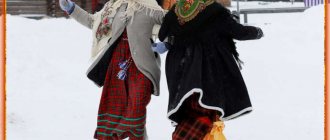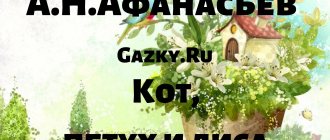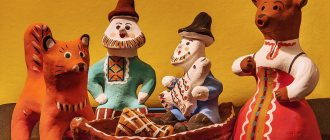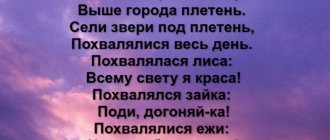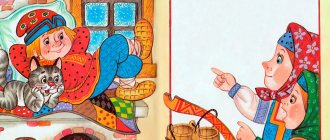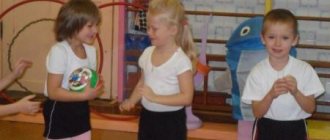Holidays in different countries
There are holidays that are celebrated all over the world - New Year, birthday, wedding. And there are absolutely special ones.
- In Japan, one of the main holidays is Hinamatsuri, the “festival of dolls.” Every year on March 3, girls in elegant kimonos lower boats with paper dolls down the river. People believe that dolls take away sorrows and misfortunes with them.
- India has its own holiday - the “monkey feast”. The monkeys are served a table full of goodies. This is how Hindus worship the god Rama and his monkey army. The arrival of spring is celebrated here with a festival of colors, during which people douse each other with water painted in bright colors.
- Scotland hosts a very spectacular fire festival. In the evening, people dress in national costumes and carry burning torches to traditional music.
New Year
Celebrating the New Year is one of the most long-awaited customs for children. On the night from December 31 to January 1, it is celebrated in almost every home. Briefly about New Year's traditions of different nations:
- In Russia, gifts are given to children by the kind Grandfather Frost in a long fur coat with a magic staff in his hand. He has a granddaughter, Snegurochka, and a wife, Zima. He lives in Veliky Ustyug.
- In Poland, instead of Father Frost, children are congratulated by Saint Nicholas. He rides a horse and wears a white robe. His assistant, Peter, helps deliver the gifts. Only obedient children receive them. The spoiled are given the rod.
- Canadian children are waiting for Santa Claus on New Year's Day. He rides through the air in a team of reindeer and enters the house through a chimney. His home is in Lapland. There he makes gifts all year long with the elves.
- In France, Pierre Noel comes to the children on New Year's Eve. He rides a donkey and puts gifts in shoes.
- Finnish Joulupukki is small in stature. On New Year's Day he is carried in a cart by a goat. All the child needs to do is whisper in a whisper what kind of gift he wants, and Joulupukki will definitely hear it. Other gnomes help the old gnome.
- In Italy, Santa Claus is a woman who looks very much like a witch. Her name is Befana. In fact, Befana is kind, even though she rides around on a broom. She has a golden key with which she can open any door. On New Year's Day, she flies up to children's stockings and fills them with gifts.
What are folk traditions and customs?
Many families have their own traditions and customs. In one, for example, they always drink tea with lemon in the morning, and hot cocoa in the evening. And so every day. Another family may have different customs. For example, give each other handmade cards for the holidays.
Traditions and customs are characteristic not only of individual families, but also of entire nations. Some of them may seem stupid and funny, others - understandable and wise. The Slavic peoples have a very good tradition of giving up their seats in transport to the elderly. This seems normal to all of us. But the French do not do this.
EASTER CHRISTIAN
Easter celebrates the resurrection of Jesus Christ. It is the most important holiday in the Christian calendar.
Easter Sunday does not fall on the same date every year, but always occurs between March 22 and April 25. It falls on the first Sunday after the first full moon following March 21, the vernal equinox. The date of Easter Sunday was approved by the church council in Nicaea in 325 AD.
The name “Easter” is a direct transfer of the name of the Jewish holiday, celebrated annually for a week, starting from the 14th day of the spring month of Nissan. The name “Easter” itself is a Greek modification of the Hebrew word “pesah”, which was interpreted as “passing”; was borrowed from the more ancient pastoral custom of celebrating the transition from winter to summer pastures.
The death and resurrection of Christ coincided with the holiday of Easter, and He Himself was likened to an innocent lamb, slaughtered according to custom before the beginning of this holiday. Christians honored Sunday as the day of the Resurrection of Christ.
The events of the gospel history coincided with the Jewish holiday of Passover; they were close in time of celebration.
The calculation of the time of Easter celebration is currently carried out in most Christian denominations according to the lunisolar calendar.
Russian Easter is also characterized by a number of traditions, such as decorating tables with blessed Easter cottage cheese and Easter cakes. Cottage cheese Easter is made in the form of a truncated pyramid - a symbol of the Holy Sepulcher. On its sides are depicted the instruments of Christ’s suffering: a cross, a spear, a cane, as well as symbols of the resurrection: flowers, sprouted grains, sprouts, the letters “H.V.”
But the most important culinary masterpiece of the table has always been the Easter cake consecrated in the temple, which is like a homemade Artos, which is an obligatory symbol of the Easter service. Artos is a complete prosphora, a large bread with an image of a cross, which recalls the sacrificial death of the Savior in atonement for the sins of mankind. The artos is placed on a lectern in front of the iconostasis and stands until the end of Holy Week, and then is divided into small pieces and distributed to believers in the temple.
